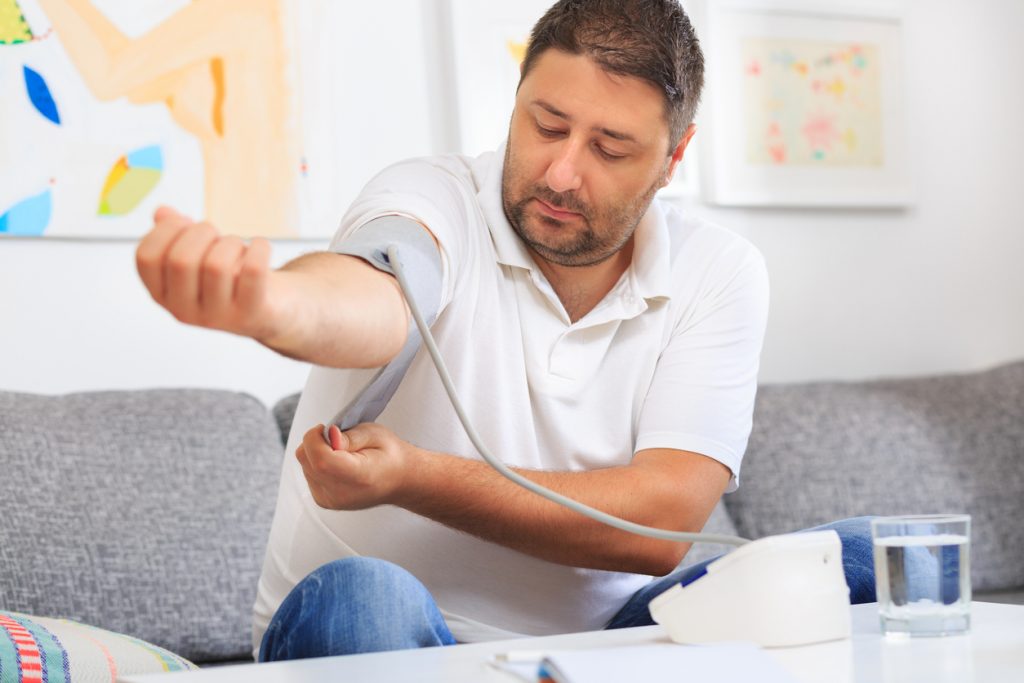What is the best way to manage low blood pressure?
For some generally fit people with a slow pulse, low blood pressure can be a sign of good health. For others, low blood pressure can sometimes be a problem.
So what are the symptoms and how can you manage it? Let’s start with what blood pressure levels actually are.
What are blood pressure levels?
Your blood pressure is recorded as two numbers. The first number is your Systolic blood pressure or how much pressure your blood is exerting against your artery walls when the heart beats.
The second number is your Diastolic blood pressure or how much pressure your blood is exerting against your artery walls while the heart is resting between beats.
Hypotension, also known as low blood pressure, is a blood pressure under 90/60 mm/Hg and sudden, severe low blood pressure (shock) can be associated with serious medical conditions.

Low blood pressure symptoms
The symptoms of low blood pressure can include:
- feeling light-headed
- dizziness
- weakness
- blurry vision
- pale, clammy skin
- fatigue
- fainting
These can occur even when you’re doing nothing, but they’re more likely to occur when changing position, like standing up, or during time of exertion like straining on the toilet.
Often there aren’t any symptoms, and low blood pressure is only identified through routine medical examinations or during an investigation into some other condition or illness.
If you are experiencing symptoms, you should speak to a doctor to find out the right treatment for you. You can request a telehealth consultation with one of our Australian-registered doctors from anywhere in Australia, seven days a week.
To speak with an InstantScripts Doctor:
Request a ConsultationIf you have run out of your script:
Request a ScriptWhat causes low blood pressure?
Common causes of low blood pressure can include:
- Being overheated
- Donating blood
- Bleeding heavily
- Dehydration
- Standing up too quickly
- Standing too long without moving
- Pregnancy
- Extreme hot or cold temperatures
- Alcohol or recreational drugs
- Certain herbal supplements, vitamins or home remedies
- Dietary deficiencies
- Prescription medications that treat blood pressure, heart failure, erectile dysfunction, neurological problems, depression
- Heart and lung conditions
- Central nervous system diseases
- Irregular heart rhythms
- Pulmonary embolism
- Allergic reactions
- Immune reactions

How to manage low blood pressure
If you are experiencing symptoms, you should speak to a doctor to find out the right treatment for you. You can request a telehealth consultation with one of our Australian-registered doctors from anywhere in Australia, seven days a week.
Alternatively your doctor may advise you to:
- Learn how to recognise what low blood pressure feels like and how to react to symptoms
- Take precautions to prevent episodes of low blood pressure, such as avoiding dehydration, hot showers or standing up too quickly
- Change your diet and eat small meals frequently. Increasing your salt intake or including caffeinated drinks like coffee which can help increase your blood pressure
- Drink more water. Fluids increase blood volume and help prevent dehydration, both of which are important in treating hypotension
- Exercise regularly. Aim for at least 30 minutes of moderate physical activity every day
- Wear compression stockings to help blood flow throughout the body
To speak with an InstantScripts Doctor:
Request a ConsultationIf you have run out of your script:
Request a ScriptFergus Taylor has a corporate and government background encompassing health, infrastructure, media, advertising, environment, emergency services and justice.
© InstantScripts
Level 8 / 637 Flinders St.,
Docklands VIC 3008

